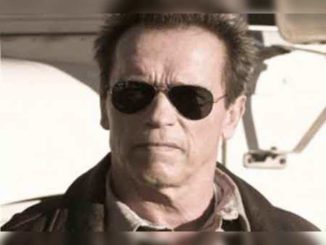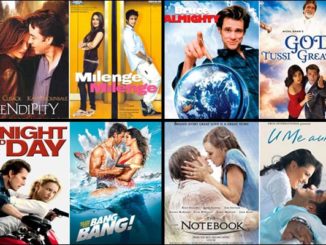
American R/C Helicopters, Inc. was formed in 1975 and incorporated in 1976. The desires and goals of management and staff were to design and produce an American made radio controlled helicopter kit at an affordable price to satisfy the American modeler. With the release of their first model, the “Rev-olution”, a .40 powered helicopter, they realized almost overnight success, becoming one of the largest producers of R/C helicopters in the world and the only American manufacturer at that time.
With ongoing development of model helicopters and mounting interest in them, contests were formed, taking place all over the country. In 1977, John A. Simone, at the age of 20, became AMA National Helicopter Champion, and the first person to perform a perfect loop with a fixed pitch helicopter in national competition.
Motivated by an intense desire to be at the leading edge as pioneers of R/C helicopter design and flight, John and his friend and coworker, Lowell Draper, performed the first true engine-off (or idle) autorotations with a .60 powered model manufactured by American R/C Helicopters dubbed the “Commander”. The location: 1979 Tangerine Helicopter Contest held in Miami, Florida. This proved to many would-be R/C pilots that the possibilities of these models were virtually unlimited. Thus, a truly new breed of R/C flyer was born.
American R/C Helicopters now had the distinction of not only being the leader in new and trend-setting designs, but also had become known around the world in just three short years. With the knowledge gained in development and production it was inevitable that their path would cross that of the film makers. The first film for which John provided services was Towering Inferno. He worked in conjunction with Ernie Huber and was broken in the hard way by Irwin Allen, producer of numerous film classics and a very exacting professional. He did not accept excuses and wanted things done right the first time.
Up until this time, John’s contest flight experience had been the greatest challenge of his ability to concentrate under pressure. As he advanced in film work and was solely accountable for building and flight performance he was to learn in short order that the demands of producing exact miniature flying replicas, sometimes by the dozen and “on schedule”, not to mention the tension of shooting “one shot” scenes, were a far cry from building and flying for contest competition. With literally thousands of dollars an hour being spent in production costs, John found his situation pressure packed beyond imagination.
Concerning the frequent one-time shots, John commented, “They either get it and I’m a hero, or Heaven forbid, it’s a total disaster.” Fortunately the latter never occurred.
Each new film in which John’s skills were called upon to design, build and fly the models was a unique experience. Lowell Draper, then machine shop foreman at American R/C, was also an expert flyer and had accompanied John to many parts of the world on film location. Together they worked on sets with such celebrities as Sophia Loren, James Coburn, O. J. Simpson, and others. In 1982 John spent a week on location with Clint Eastwood in Greenland for Firefox.
One of John’s films Blue Thunder, called for four Blue Thunder Specials at 1/6 scale, two at 1/10 scale, three Hughes 500D models at 1/6 and two at 1/10 scale, three Jet Rangers at 1/6 scale and four YF-16’s. These models were made from blueprints and/or photographs of the originals. John enlisted the service of Ernie Huber to build and install the mechanics in the 500D’s and to serve as a pilot on location.
The full size Blue Thunder Specials were being built at Palomar Airport in Carlsbad, CA, very close to American’s facility in San Marcos. John made several trips to Palomar to compare minute details with the full size helicopters. When the drawings were complete and everything laid out, the plug carving began. There were 15 separate body pieces in the model. The transmission and all rotor head parts, along with the fully functional ducted fan tail, had to be incorporated. Even with his knowledge and experience this project was a test of John’s design, engineering and building skills. With Ernie’s work on the Hughes, the balance of construction was completed by John and Lowell within six months from start to finish.
The studio’s art director came down to help with some decals and was astounded with the realism of the models, later commenting that in all the years he had been involved in special effects these models were among the best examples of art work he had ever seen. The Special was exact in every detail, from tiny rivets on the engine pods to the miniature costumed pilot, Roy Sheider. At last, everything was done and only the flying remained. Did he say “only the flying?!” The realization of what lay ahead was starting to sink in.
The daring scene in which the Special does a loop over the Hughes and shoots it down from behind was performed by John flying the Special and Lowell Draper (wearing the black hat) flying the Hughes. During the filming of this sequence John performed about 40 loops with a helicopter that weighed in at over 14 pounds!
“There hasn’t been a contest designed yet that can demand the level of skill it takes for just one flight on a movie set, ” John commented. “There was one take in Blue Thunder where I had to fly between two rows of buildings (built to the same scale as the choppers) and had no eye contact with my ship for eight to ten seconds. It was done, but just barely. I had tried to explain to the the movie folks that this couldn’t be done with much margin for error. Not being R/C flyers themselves they just couldn’t relate to the skill involved. For example, the reason for the 40 loops is that after each one the director would say, ‘I like it; one more time, but I want a different camera angle (or more cameras), different lenses, etc.’ All this was controlled with the aid of headsets on the pilots. Lowell and I were patched in to director, cameramen and special effects people. The director would give me the word to start a maneuver and I relayed directions to Lowell or Ernie as to where, how fast, and how high they were to enter camera range. The pressure to perform perfectly was immense.”
The next day is spent watching the “dailys”, film shot the previous day. I had the opportunity to go with John on different occasions to view the shots. It was fascinating to me. Although the director seemed to like what he saw, he would invariably want to do it all “one more time”. In the case of Blue Thunder their efforts were well rewarded.
John continued, ‘The following day the pressure is on again. Shooting schedules are sometimes extended up to 11 hours at a time with 5 full hours of flying interspersed.” John didn’t however, take the risk of flying the first test runs with the expensive models. He always took one of his trusty “Mantis or Supermantis” production helicopters to check out wind and flying conditions. He added, “This was a must in order for the film crew to anticipate proper angles and flying speeds of the miniatures.”
All in all, everything went together perfectly. John was invited to view the premiere in Hollywood to see the fruits of his labor. Afterward he told me, “Kathy, if I didn’t know where the models were used I couldn’t have picked them out. It was probably the nicest flying Lowell and I had ever done.”
John told me that while on location it’s not uncommon to spend a lot of time just waiting, but added that he didn’t mind much when filming Fire Power. “We got to lie around on the beaches on the island of St. Lucia.” I asked him to tell me again just how many places making all these movies had taken him. He laughed, knowing how jealous I get, and began. “While making Raise the Titanic I spent two weeks on the island of Malta, off the coast of Sicily. When Firefox was filmed I was in sub-zero temperatures of -5 to -10 in Thule, Greenland. We flew to Greenland from McGuire Air Force Base on a Starlifter equipped with government issue ear plugs. It was so noisy that we couldn’t hear ourselves think!”
“When we finally landed in Thule after five hours of sightless flight I thought it would be like stepping out on the moon. I didn’t know what to expect, but when the doors opened I was totally amazed. The scenery was breathtaking”!
“Repairs had to be made to the helicopters, which presented a minor problem since “Zap” and epoxy wouldn’t work without humidity to set them off, and the “local hobby shop” was non-existent. The weather was like none I had known before. Variable conditions were classified as ‘phases’. ‘Phase One’ was a mild storm with winds about 20 to 35 MPH. Then there was a ‘Phase Two’, with increased velocity, and finally a ‘Phase Three’, in which winds of 80 to 100 MPH prevailed. The military was prepared for these situations. Little huts were placed around the base where you were told to take refuge and wait it out. It was a rare and unique experience.”
By way of consolation to me John was quick to add that most locations are not in such unique or glamorous places but generally are either movie sets in Hollywood or out in the desert, as was the case with Hanky Panky and Swarm, where the miniatures were exploded. I asked how the explosive scenes were handled and what he told me was very interesting. “All the scenes where a model is required to explode need very special attention. Pyrotechnic specialists, a number of ground support people, and about two to three pounds of explosives per ship are needed. The explosive material is placed in the helicopter at the scene and is armed by another transmitter. This always gets a little unnerving if the pilot, ‘me’, still might have to make one more engine adjustment and is facing what could be a most untimely explosion should something to wrong.”
Asked if he was ever worried about anything going wrong, he replied, “Well, I guess it is in the back of your mind but I never had any problems. The pyrotechnic people were quite professional and extreme care was taken in every phase from loading of the explosives to the actual detonation.”
What unforgettable moment stands out in his mind? “Well, this didn’t happen while filming, but a few months after filming in Greenland with Mr. Eastwood, I attended the El Toro Marine Air Show as a V.I.P. to watch the Blue Angels perform. My girlfriend and I had just taken our seats and I heard someone calling my name. I looked over and there stood Clint Eastwood himself. I stepped down to shake his hand, we exchanged pleasantries and I took my seat again. Needless to say, my girlfriend was quite impressed. I tried to act like it was no big thing, but that really made my day!”
John continued, “While making a movie I guess one of the most memorable thrills was being along for one of the very first test flights in the full size Blue Thunder Special. After seeing the premiere I remembered Roy Sheider saying it was a little nose-heavy. He was right! The full size chopper was quite nose-heavy, but nonetheless very impressive. I took my video camera along on another test flight and got some really super footage. It was a very special opportunity I will never forget.” Knowing John aspired to becoming licensed to fly full sized helicopters, I understood why this experience ranked so high among is memories.
Proudly WWW.PONIREVO.COM
by Kathy Elson



